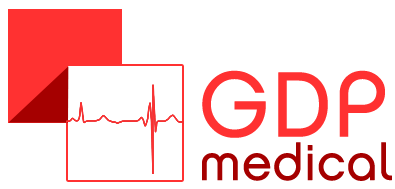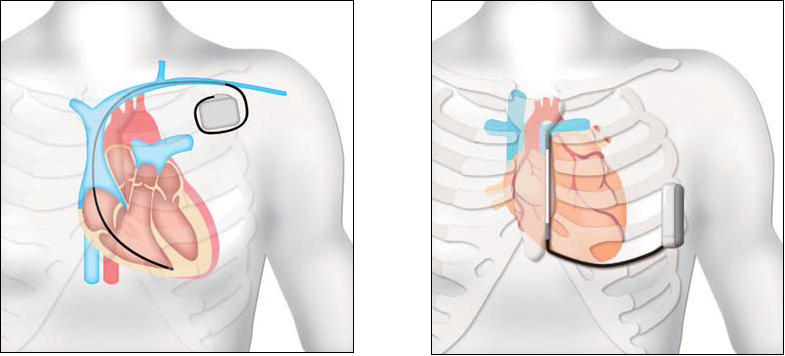What is it
An Implantable Cardioverter Defibrillator (ICD) is a battery-powered device placed under the skin or the muscle (usually on the anterior chest) connected to different heart chambers with leads (cables, Fig 3). It keeps track of your heart rate. If an abnormal fast heart rhythm (ventricular tachycardia or fibrillation) is detected, the device will deliver an electric shock to restore a normal heartbeat. If a slow heartbeat is detected, an electrical impulse sent through the leads will cause the heart to beat faster. ICDs can have one, two or three leads, which are placed in the right ventricle (the heart chamber that pumps blood to the lungs), right atrium (the heart chamber that collects blood from the heart) and ventricle or right atrium and right and left ventricle (the heart chamber that pumps blood to the body), respectively. The last system is called Defibrillator with Cardiac Resynchronization Therapy and is implanted in specific patients with heart failure at high risk for sudden cardiac death. For some time, an entirely subcutaneous defibrillator system has been available (fig. 4). The head/battery of the ICD is connected with a lead implanted on the anterior thorax, avoiding placement of any cable in the heart, therefore reducing specific complications related to the procedure. Patients are usually discharged 2 days after the operation.



